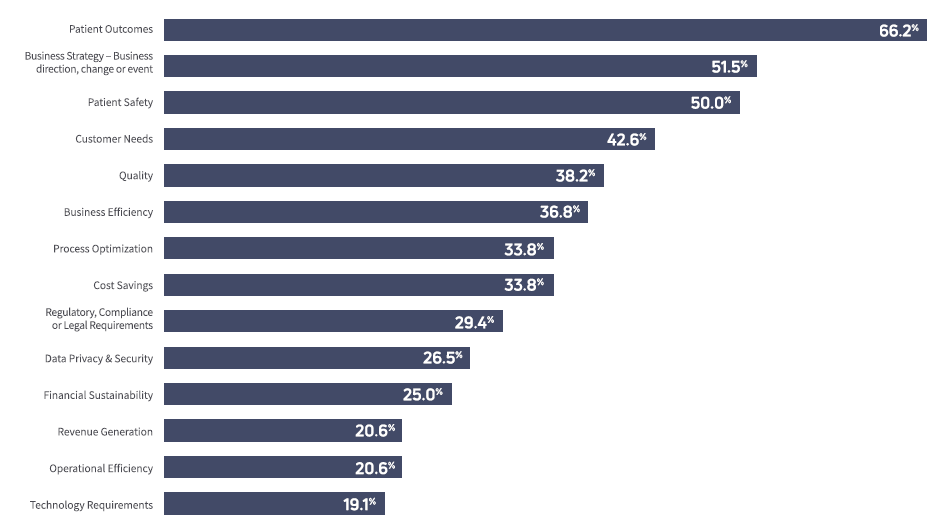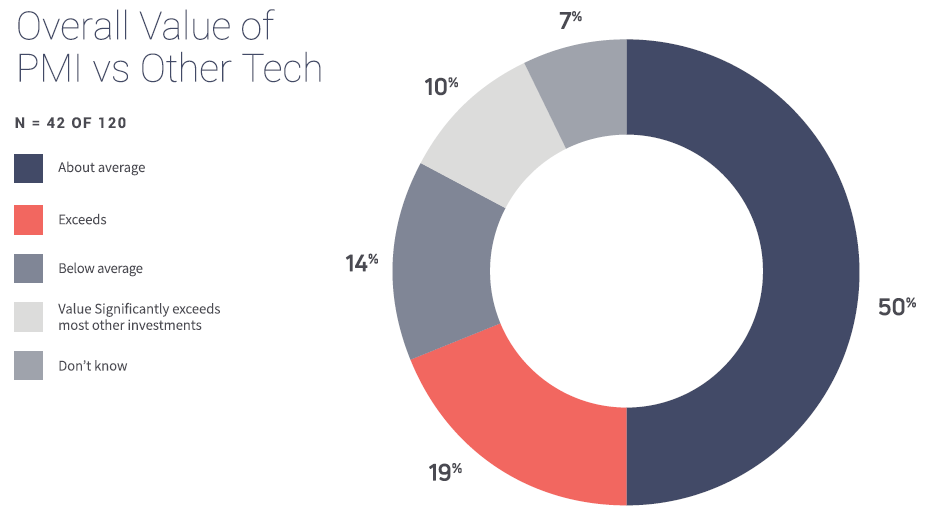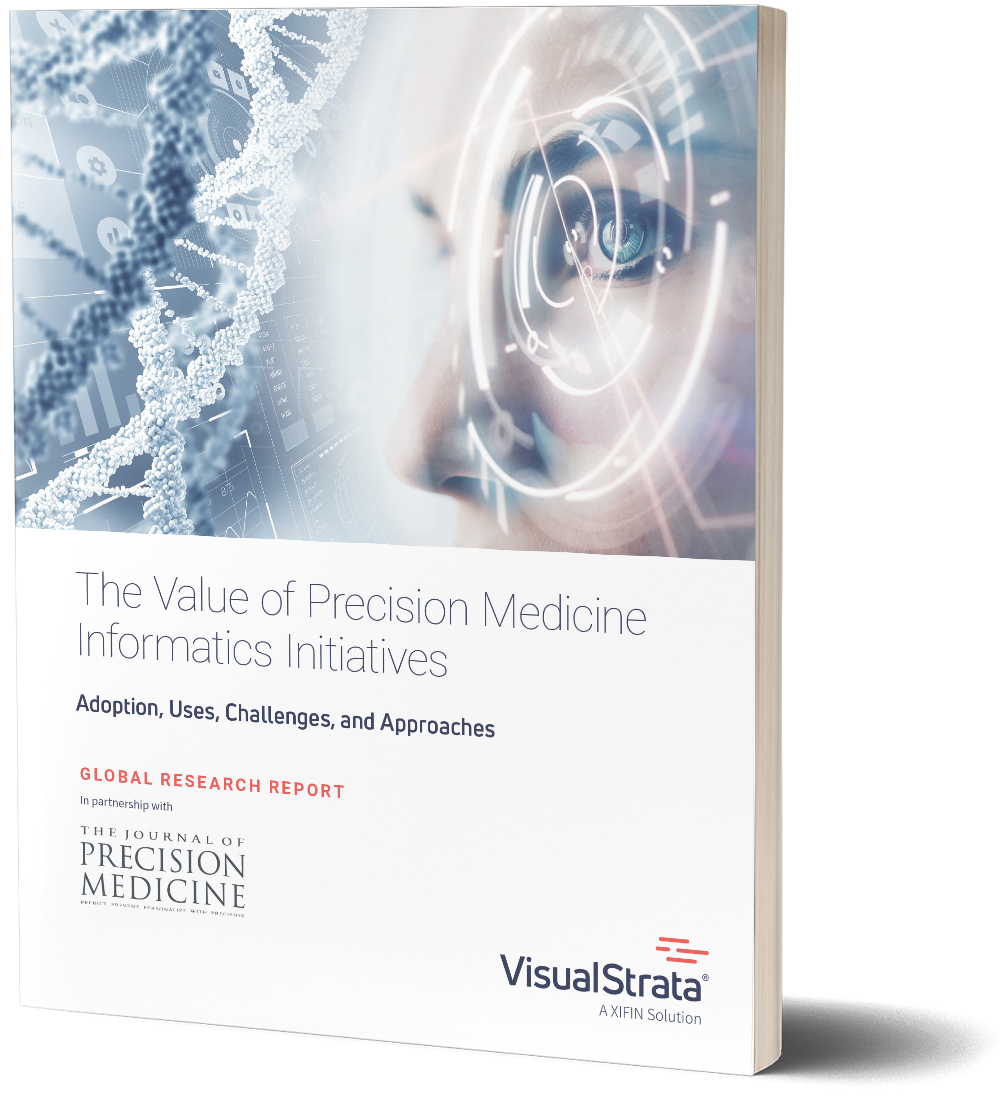Enhancing the Value of Precision Medicine Informatics
Jan 29, 2020
Exploring the value of precision medicine informatics (PMI), a recent XIFIN and The Journal of Precision Medicine study reported that approximately 60% of respondents said that their enterprise system, such as their EMR or EHR, did not meet or only partially met their needs as a precision medicine user.
Survey-takers said the most challenging physician, or a patient-facing IT system/software issue, that impacted their precision medicine program was that their EMR capabilities did not enable precision medicine. The second most challenging was real-time access to patient data within the care team collaboration software. Also of concern was real-time access to patient data within provider facing temporal record case management software.
PMI Initiatives
PMI is a relatively new field that is garnering high interest — along with various challenges. To bring the discipline to light, XIFIN partnered with The Journal of Precision Medicine to conduct research and publish, "The Value of Precision Medicine Informatics Initiatives." This 36-page report details the initiatives, technology adoption, data accessibility, challenges, and approaches that impact and support PMI programs.
The report also pointed out that precision medicine and population health informatics offer the potential to integrate data at its most basic unit. Practitioners use accompanying insights from aggregated de-identified data, which is collected by the software they use every day to support the patient care decisions they make.
This report established a baseline of technology satisfaction and adoption and identified data integration and accessibility trends and how the value of PMI initiatives is defined. The research also attempted to prove that specific combinations of technology, data integration, and approaches lead to the better overall value of a PMI program. The report encompassed findings related to the end-users of PMI as well as decision-makers and helped determine if existing mainstream enterprise systems are effectively supporting precision medicine programs.
"We know that there is much interest in all of the different technologies, data, and cutting-edge methodologies that are required to succeed in precision medicine,” said Nigel Russell, Editor-in-Chief, The Journal of Precision Medicine. “The discipline of precision medicine informatics (PMI) is a relatively new field with many lessons to learn and best practices to establish."
Areas of Key Findings
Here are some of the report's findings.
Technology Adoption and Use
The study found that technology adoption fell into three categories for respondents who selected technologies that are currently in use:
- Respondents who said their frequency of use is higher than expected indicated that their top technologies are provider facing clinical analytics solutions, real-world data aggregation technology, business intelligence tools, and clinical data warehouse.
- Respondents who said their frequency is meeting expectations indicated that their top technologies are biomedical analytics solutions, clinical data warehouse, and temporal record capabilities.
- Respondents who said their frequency of use is lower than expected indicated that their top technologies are real-world data analytics, platforms that enable enrollment and management in clinical trials, real-world aggregation solutions, and registries.
The top two technologies that respondents plan to adopt are healthcare financial analytics (27.7%) and platforms that enable enrollment and management in clinical trials (25.5%). Tied for third at 25% were clinical data warehouse, real-world data aggregation technology, and real-world data analytics capabilities.
Other technologies that respondents plan to adopt include care team collaboration, tools to refer patients to certified genetic counselors, biomedical analytics solutions, clinical decision support capabilities, provider-facing clinical analytics solutions, and quality reporting capabilities.
Critical Business Drivers
Understandably, patient outcomes was the top key business driver of PMI initiatives for 66.2% of survey respondents. Other crucial business drivers named were:

Business drivers selected by 30% or fewer of the survey respondents included (in descending order): regulatory, compliance, or legal requirements; data privacy and security; financial sustainability; revenue generation; operational efficiency; and technology requirements.
Overall Technology Challenges
When asked to rank what aspects of data-related IT systems or software are the most challenging to address for their PMI programs, 38.9% of respondents indicated analytics across clinical, diagnostic, claims, and financial data as the No. 1 challenge. A close second was data (unstructured) curation and annotation at 38.4%. Also named by respondents:
- Integration/interoperability (36%)
- Data (structured) curation and annotation (29.3%)
- Clinical improvement activity reporting (25.2%)
Accessible PMI Data
Focusing heavily on data accessibility (both current state and future trend), the study provided respondent insights regarding the types of data that are or are being made accessible within precision medicine or healthcare data informatics currently.
For current accessibility, the top three data types were:
- Laboratory data/results (16.7%)
- Clinical notes (15.4%)
- Treatment and/or therapy data (14.9%)
For future accessibility, the top three data types were:
- Device and/or sensor data (13.8%)
- Patient reported outcomes (13.8%)
- Financial (not claims or reimbursement) (12.6%)
Overall Value of PMI Comparisons
When asked to indicate the value achieved from PMI as compared to other technology investments, almost 30% of respondents said that PMI’s value exceeds or significantly exceeds most other technology investments. Also, when asked overall what level of value was achieved from PMI solutions compared to initial expectations going in, 21% of respondents said the overall value of PMI exceeds expectations. In contrast, over 50% indicated that value was close to expectations.


PMI is a nascent discipline with growing support and exciting possibilities. Interested in learning what value organizations reap from precision medicine informatics investments? Read the full 36-page report, and add your voice to the conversation by participating in the study.
Read NowPublished by XIFIN
